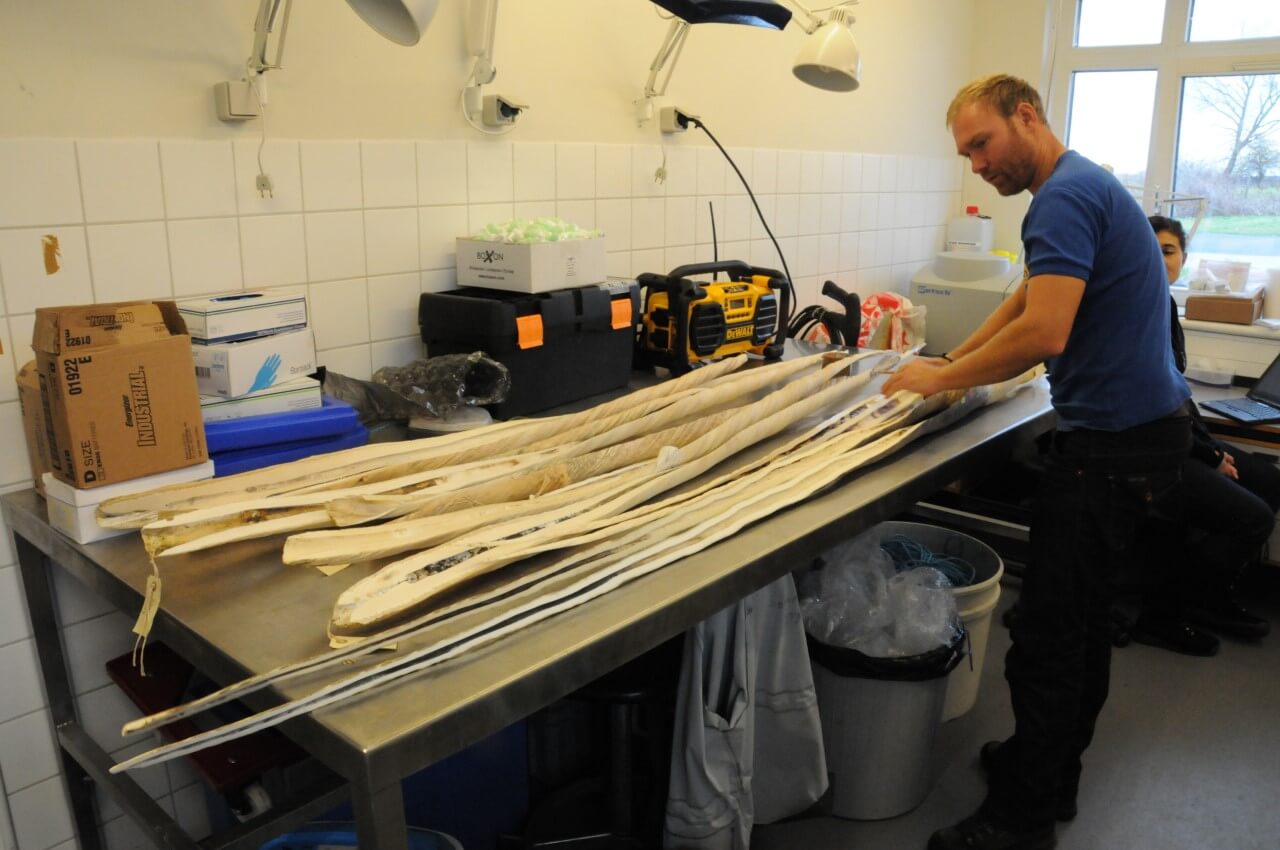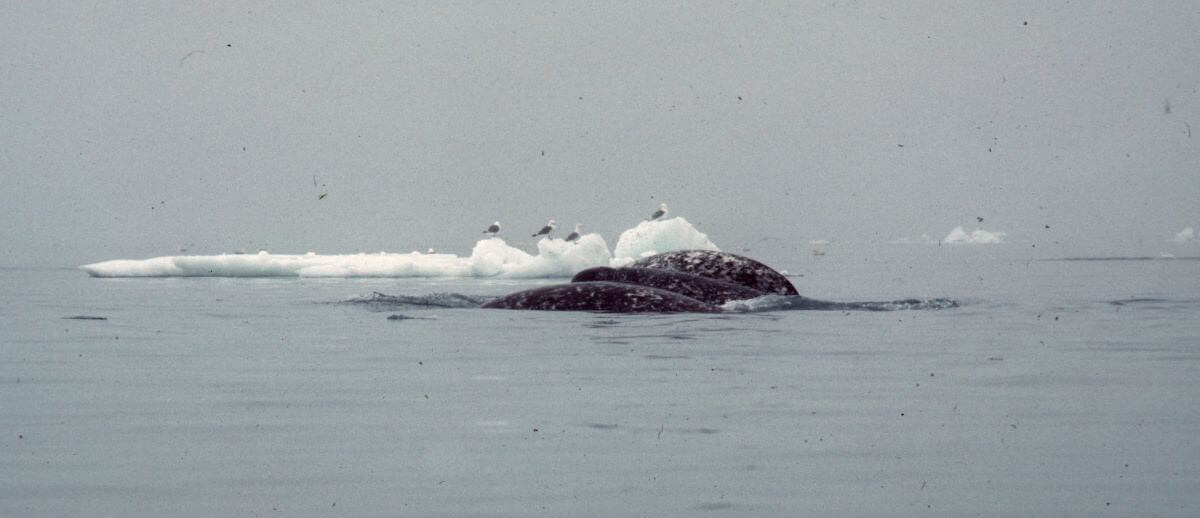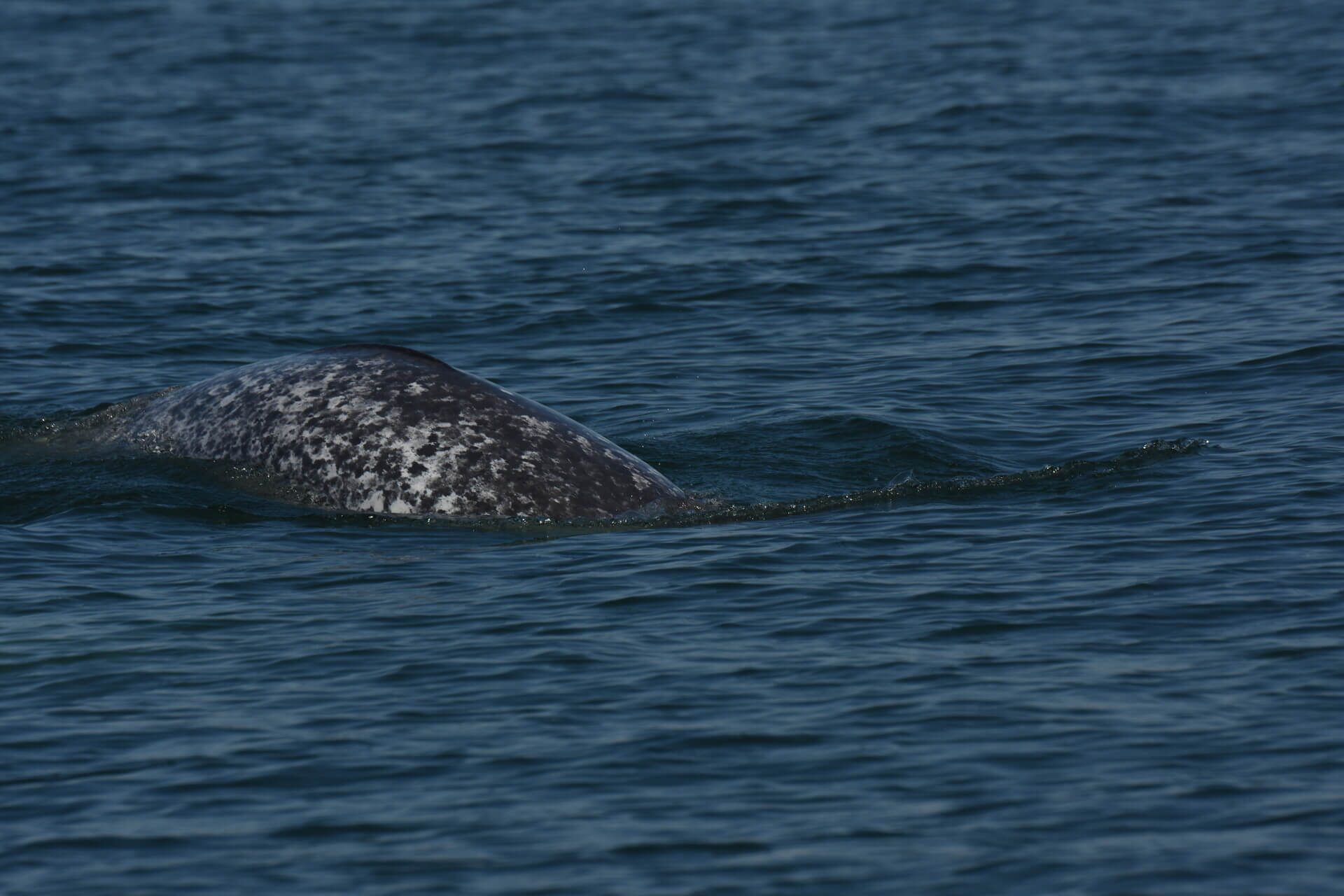The tusk of the narwhal – a long spiral-shaped tooth that can measure nearly 3 metres long – makes a lasting impression. But it is also an invaluable resource of long-term data to better understand the ecology of this “unicorn of the sea.” By analyzing this oversized tooth, researchers at McGill University in Montréal and Aarhus University in Denmark were able to learn more about narwhals’ diets and their exposure to chemical pollutants. Whales Online takes a look at this amazing research technique and what it can tell us about these unicorns of the Arctic.
One layer per year
If a narwhal tusk is cut lengthwise, one will notice annual growth layers similar to the concentric rings of a tree. Each layer contains information about the living conditions of the animal at the time it was formed. By analyzing the composition of the different layers of this impressive tooth, researchers can characterize, for example, the diet and habitat that narwhals have had in their lifetimes.
Adapting by eating different fish
In a recent study, researchers analyzed the composition of narwhal tusk samples by measuring the levels of two “dietary tracers”, namely stable isotopes of carbon and nitrogen. Their results show how the diet of narwhals in the Arctic has evolved over the past fifty years. Between 1960 and 2010, belugas are believed to have shifted from a predominantly ice-associated and benthic diet to a pelagic diet. This means that instead of hunting prey living near the ocean floor or in the microclimate of marine areas with extensive ice coverage in summer, belugas have switched to species inhabiting the water column. This change in diet is likely testimony to an adaptation to melting sea ice – their natural habitat – which is now threatened by global warming.
More and more mercury
Researchers also analyzed the amount of a chemical pollutant, mercury, along the narwhal’s tusk. They speculated that a change in diet might be increasing individuals’ exposure to mercury. Indeed, the higher marine predators’ prey are on the food chain, the more mercury they contain and the faster the animals that feed on them will accumulate this toxin over the course of their lifetime. The accumulation of toxins through the ingestion of contaminated organisms is called trophic amplification, which is a form of bioaccumulation.
A sharp increase in mercury levels has been observed in narwhals since the first decade of this century. However, this is not believed to be related to the species’ change in diet, as pelagic species are located at a similar or lower level on the food chain than those species associated with ice. Rather, according to the researchers, it is linked to the increase in anthropogenic mercury emissions or the increased accessibility of mercury in the Arctic due to climate change.
Risks to the brain
However, above a certain threshold, mercury accumulations can have negative consequences on the health of large marine mammals. This is because mercury is a neurotoxic substance, meaning it attacks the nervous system and the brain. The long-term accumulation of this chemical pollutant is likely to have varying effects on different parts of the brains of toothed whales.
Unlike other species, narwhals do not have an effective means of ridding their bodies of mercury. The polar bear, for example, can eliminate a considerable amount of this contaminant when it sheds its fur. A recent study analyzing brain samples taken from narwhals, pilot whales, harbour porpoises, polar bears and ringed seals reveals, moreover, that total mercury concentration in the brains of odontocetes whales is higher than that of other mammals living in the Arctic. In the long term, will the accumulation of mercury have an impact on the way marine mammals behave? Researchers aren’t yet sure.
Narwhal tusk analysis conducted by Dr. Dietz and his team suggests that climate change and human activities are having an effect, even on marine mammals that live far from populated areas. By examining a tooth, scientists can study the buildup of contaminants that do not occur or do not have a significant impact in other more commonly studied tissues such as muscle or skin. The narwhal’s tusk thus represents a very useful archive for deciphering the history of these vulnerable marine mammals to the domino effects of climate change.








